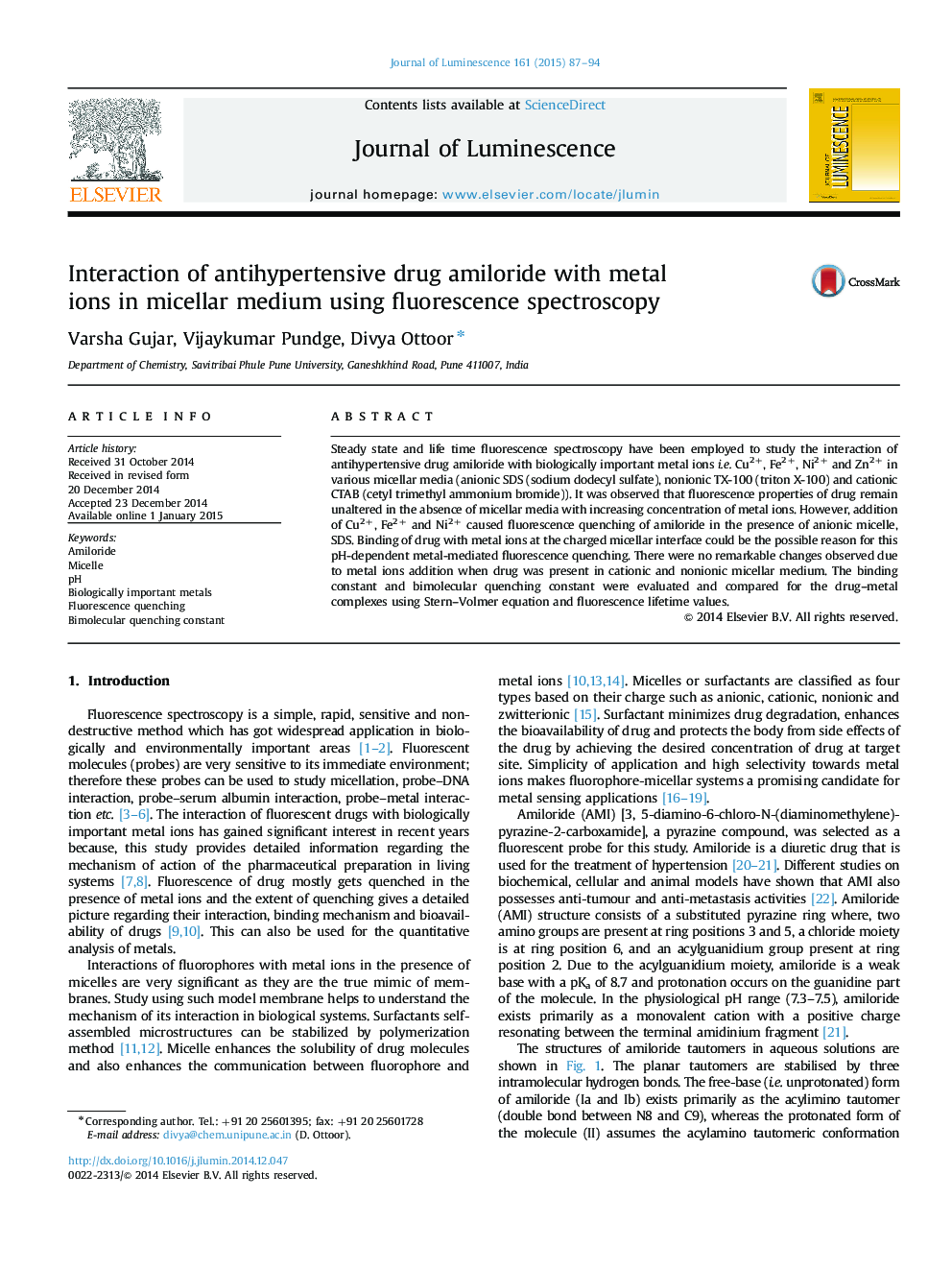| Article ID | Journal | Published Year | Pages | File Type |
|---|---|---|---|---|
| 5398929 | Journal of Luminescence | 2015 | 8 Pages |
Abstract
Steady state and life time fluorescence spectroscopy have been employed to study the interaction of antihypertensive drug amiloride with biologically important metal ions i.e. Cu2+, Fe2+, Ni2+ and Zn2+ in various micellar media (anionic SDS (sodium dodecyl sulfate), nonionic TX-100 (triton X-100) and cationic CTAB (cetyl trimethyl ammonium bromide)). It was observed that fluorescence properties of drug remain unaltered in the absence of micellar media with increasing concentration of metal ions. However, addition of Cu2+, Fe2+ and Ni2+ caused fluorescence quenching of amiloride in the presence of anionic micelle, SDS. Binding of drug with metal ions at the charged micellar interface could be the possible reason for this pH-dependent metal-mediated fluorescence quenching. There were no remarkable changes observed due to metal ions addition when drug was present in cationic and nonionic micellar medium. The binding constant and bimolecular quenching constant were evaluated and compared for the drug-metal complexes using Stern-Volmer equation and fluorescence lifetime values.
Related Topics
Physical Sciences and Engineering
Chemistry
Physical and Theoretical Chemistry
Authors
Varsha Gujar, Vijaykumar Pundge, Divya Ottoor,
